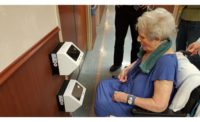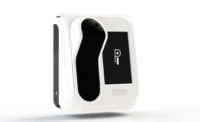Alabama’s Auburn University has updated and expanded the biometric identity system it uses to secure areas within its athletic facilities. Princeton Identity’s new IDS software and Access200 iris readers allow student athletes, coaches and other affiliated team members enrolled in the system to unlock the doors to team locker rooms by glancing at small reader panels mounted outside each entrance. As athletes and coaches rarely carry personal items with them onto the field, the Princeton Identity system eliminates the need for access control cards, fobs, or PIN codes, which can be difficult to manually enter when carrying equipment. It also increases security. Biometric credentials make it impossible for students to share cards or codes with others, while the system’s convenience factor reduces the desire for students to leave doors propped open for easier access.
The new IDS software is browser-based, providing greater flexibility to school administrators responsible for enrolling students and managing the system. The system’s Access200e enrollment camera is a stand-alone unit that can be plugged into any network jack without need for special software or drivers, allowing enrollment to occur from any web-enabled device, including tablets and laptops. Permissions are handled through an integration with the university’s Lenel OnGuard access control system. When students leave a team or graduate, their permissions are turned off. However, as iris signatures remain stable over time, if students or staff return to the program — even years later — there is no need for re-enrollment. Their permissions are simply reactivated.
System configuration, management and monitoring of the IDS system is handled through a web-based dashboard that provides Auburn’s IT staff with access to all devices, which are spread across multiple buildings on campus.
The installation of new Princeton Identity hardware and software are an upgrade to the university’s legacy Princeton Identity system, which was installed in 2011. The new platform offers faster processing, a superior software interface, more features and greater flexibility. Older readers will still be supported, allowing the university to preserve the value of earlier investments.
Jeff Steele, associate director of facilities and operations, said, “Reaction to the PI system has been overwhelmingly positive. When we give campus tours to prospective students and their parents, the moms and dads are most impressed with it.”









